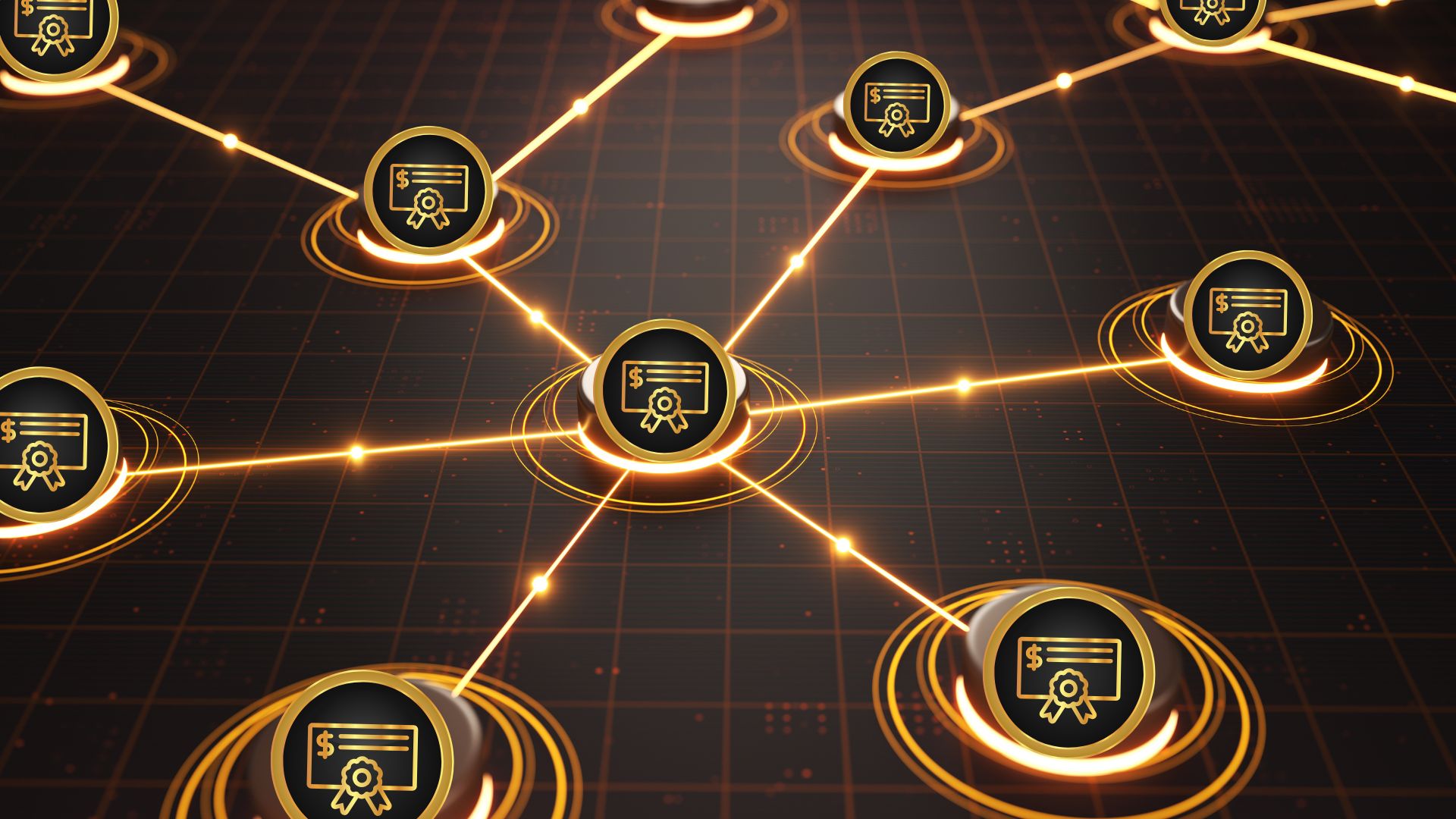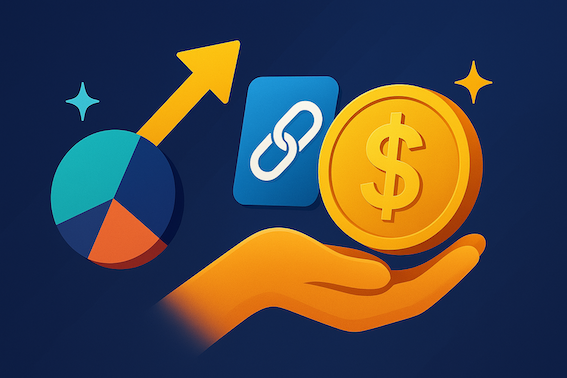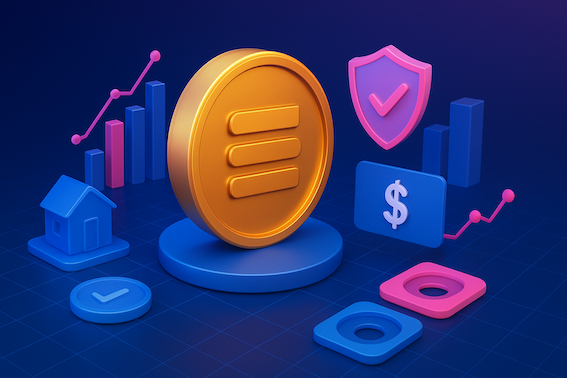AI in Asset Tokenization: Benefits and Innovations
1. What is “AI in asset tokenization,” and why does it matter now?
AI in asset tokenization is the use of machine learning and automation to plan, issue, price, monitor, and service real-world assets (RWAs) represented as tokens on blockchains. In 2024–2025, tokenized money-market funds and institutional pilots pushed tokenization from concept to production, while regulators sharpened expectations for AI usage, making this the moment when AI moves from “nice to have” to a core control and efficiency layer. BlackRock’s BUIDL and Franklin Templeton’s on-chain funds exemplify institutional traction, and MAS’s Project Guardian set out fund-lifecycle patterns for tokenized products.
For organizations seeking production-grade tokenization, platforms such as Zoniqx provide lifecycle rails (TALM, TPaaS, DyCIST) that integrate AI blockchain compliance, issuance, transfers, and servicing, thus smoothing the gap between legal rules and programmable tokens.
2. How are institutions already using tokenization, and where does AI fit?
- On-chain funds: BlackRock’s BUIDL scaled rapidly and expanded across multiple chains, while Franklin Templeton’s BENJI demonstrates on-chain fund operations and market-data transparency. AI augments these products with surveillance (abuse detection), investor support (chatbots), and operational analytics (liquidity forecasting).
- Industry frameworks: Project Guardian and related reports map tokenized fund lifecycles and shared-ledger models; AI’s role is to operationalize compliance and risk at each step.
For a production stack that bakes in AI, review Zoniqx, TALM for lifecycle orchestration, Zoniqx TPaaS for issuance and servicing, SecureTrade for compliant trading, SmartAudit for analytics, and RWA GPT for investor interactions.
3. What roles does AI play in compliance for tokenized assets?
1. Digital identity, KYC/KYB, and sanctions screening
AI helps verify documents, match faces, extract entities, and triage risk flags during onboarding, aligned with FATF digital-ID guidance that encourages risk-based, remote CDD using reliable digital ID systems.
2. Policy-as-code and transfer controls
Model-driven rules (jurisdiction, investor eligibility, holding periods) can be codified at the token layer (e.g., ERC-7518/DyCIST) so that only compliant transfers settle. Zoniqx DyCIST integrates identity, policy, and audit to enforce AI blockchain compliance across chains and jurisdictions.
3. Market-abuse and fraud surveillance
Supervised and anomaly-detection models monitor transactions, behavioral signals, and communications to flag suspicious activity. UK supervisors report increased effectiveness from ML in scam detection, illustrating how techniques translate to token markets.
4. Governance and accountability
ESMA’s 2024 statement makes clear: boards remain responsible when firms use AI for investment services. This maps directly to tokenization stacks, AI must be transparent, monitored, and governed.
Where to start:
• Zoniqx DyCIST (policy + identity + audit)
• Zoniqx TALM (full lifecycle compliance gates)
4. How does AI improve valuation and pricing of tokenized RWAs?
Automated Valuation Models (AVMs) blend comparable sales, cash-flow models, and alternative data to produce timely estimates, which is useful for tokenized real estate, private credit pools, or securitized receivables. RICS notes rising AVM adoption and defines how AVM outputs fit within valuation standards; tokenization benefits because NAVs and oracles can refresh more frequently and transparently.
AI contributions to valuation in token markets:
- Feature engineering & comparables: NLP to parse leases, covenants, and disclosures; satellite/IoT feeds for real-asset state.
- NAV nowcasting: ML regressors forecasting short-term NAV drift to inform bid/ask spreads on secondary venues.
- Scenario analysis: Generative AI to assemble macro/sector narratives and stress tests, aligning with NIST’s call for documented, risk-aware AI processes.
Zoniqx provides:
- SmartAudit supports data-rich cap tables and investor reports, inputs that feed AVMs and NAV calculation workflows.
- RWA Connect and SecureTrade integrate valuation signals into liquidity venues (DEXs, ATSs), keeping pricing aligned with policy constraints.
5. In what ways does AI sharpen risk management for tokenized assets?
1. Liquidity and collateral analytics
Tokenized MMFs and treasuries are increasingly used as collateral. AI predicts redemption pressure, intraday liquidity needs, and venue fragmentation, critical as tokenized funds grow.
2. Counterparty and model risk
AI aggregates on-chain and off-chain signals (wallet history, KYB, filings) to score counterparties; NIST’s AI RMF offers a reference to document model purpose, data lineage, performance, and monitoring to keep AI guardrailed.
3. Smart-contract and operational risk
Models classify contract patterns, detect unusual flows, and prioritize audits. Zoniqx TALM centralizes control-points; DyCIST constrains transactions by jurisdiction and investor type, reducing policy breaches at source.
4. Systemic and stability lenses
The FSB’s 2024 report highlights stability considerations as tokenization scales, AI helps supervisors and firms monitor concentration, interconnections, and stress propagation.
6. How does AI automate the tokenized asset lifecycle end-to-end?
Think of lifecycle automation as a rules engine + data plane + AI copilot across these steps:
- Deal setup & structuring: AI assistants assemble term sheets, jurisdictional clauses, and offering docs based on templates and regulatory data. Zoniqx TPaaS provides the modular setup; Zoniqx TALM governs downstream states.
- Investor onboarding (KYC/KYB): Computer vision and NLP handle documents; risk scoring aligns to FATF’s risk-based digital-ID approach; exceptions route to analysts with explainable outputs.
- Issuance & compliance-aware transfer: Policy-as-code embedded at the token layer (e.g., DyCIST / ERC-7518) ensures only eligible, jurisdiction-compliant transfers execute, automating Reg S/144A-like constraints.
- Corporate actions & distributions: Event detection plus payment workflows (dividends, interest, redemptions) trigger automatically; FlexDivi-style automation on platforms like Zoniqx TPaaS streamlines recurring actions.
- Secondary trading & liquidity routing: AI routes orders to compliant venues, monitors slippage, and prevents restricted transfers. SecureTrade supports P2P/ATS connectivity, and RWA Connect bridges to DEXs/liquidity pools.
- Reporting, tax, and audit: SmartAudit automates cap-tables, distributions, and tax artifacts; models surface anomalies before audits or regulator filings.
- Investor experience: RWA GPT (AI copilot) provides conversational NAV, positions, eligibility checks, and corporate-action walkthroughs while logging explanations for compliance review.
7. What are the biggest regulatory expectations for AI in tokenization?
Regulators are converging on risk-based and accountability-centric principles:
- Documented AI risk management (purpose, data quality, bias, robustness, monitoring) per NIST AI RMF and its generative-AI profile.
- Board accountability & MiFID alignment for AI used in investment services (ESMA).
- Risk-based digital identity & remote onboarding (FATF).
- Supervisor expectations for model transparency and fairness (OECD, FCA/BoE research).
Zoniqx’s compliance-first posture (DyCIST + TALM) maps cleanly to these expectations by embedding policy checks, audit trails, and investor eligibility into token workflows, with AI handling screening, anomaly detection, and explainable decisions.
8. How can teams kick-off an AI roadmap for tokenized products?
Phase 1 — Map and measure
- Inventory token workflows (setup → onboarding → issuance → transfers → corporate actions → reporting).
- Identify decision points where AI can (a) reduce false positives, (b) improve latency, or (c) add guardrails.
- Adopt AI RMF controls for documentation, validation, drift monitoring, and incident response.
Phase 2 — Implement policy-as-code and orchestration
- Choose token standards and platforms that natively enforce compliance, such as DyCIST / ERC-7518 on Zoniqx TALM/TPaaS; this reduces integration risk and ensures every state change is reviewable.
Phase 3 — Connect liquidity with controls
- Use SecureTrade and RWA Connect patterns to access DEX/ATS rails without losing compliance controls; feed valuation signals to ensure fair pricing.
Phase 4 — Automate reporting and investor UX
- Deploy SmartAudit for cap-table/tax reporting and RWA GPT for investor servicing; set up human-in-the-loop overrides for sensitive outcomes.
9. What benefits should issuers and asset managers expect from AI-enabled tokenization?
- Compliance at speed: Lower manual review with better catch-rates; embedded transfer controls minimize post-trade remediation. (FATF risk-based onboarding + DyCIST enforcement.)
- Tighter, timely valuations: AVMs and data pipelines keep NAVs current; investors see fresher pricing on secondary venues. (RICS AVM guidance.)
- Lower operational risk: AI monitors flows and contract behaviors; NIST frameworks reduce model/ops blind spots.
- Better liquidity access: Tokenized funds and multi-venue routing increase collateral utility and settlement efficiency. (BlackRock/Franklin examples; Project Guardian fund-lifecycle work.)
- Superior investor experience: Conversational AI reduces friction in onboarding, eligibility checks, and corporate actions while keeping an audit trail. (Zoniqx RWA GPT + TALM.)
References
- BlackRock BUIDL expansion press release (2024): https://www.prnewswire.com/news-releases/blackrock-launches-new-buidl-share-classes-across-multiple-blockchains-to-expand-access-and-potential-of-buidl-ecosystem-302304035.html
- Franklin OnChain U.S. Government Money Fund (BENJI) profile: https://app.rwa.xyz/assets/BENJI
- World Economic Forum – Asset Tokenization in Financial Markets (2025): https://reports.weforum.org/docs/WEF_Asset_Tokenization_in_Financial_Markets_2025.pdf
- MAS – Guardian Funds Framework (fund lifecycle): https://www.mas.gov.sg/-/media/mas-media-library/development/fintech/guardian/guardian-funds-framework.pdf
- MAS/Project Guardian – Use of Tokenised Bank Liabilities for Transaction Banking (2025): https://www.mas.gov.sg/-/media/mas-media-library/development/fintech/guardian/project-guardian-fx-workstream-transaction-banking.pdf
- FATF – Guidance on Digital Identity (core AML/KYC principles): https://www.fatf-gafi.org/content/dam/fatf-gafi/guidance/Guidance-on-Digital-Identity.pdf
- Bank of England & FCA – Machine learning in UK financial services (2022/2024 updates): https://www.bankofengland.co.uk/report/2022/machine-learning-in-uk-financial-services
- ESMA – Public Statement on AI and Investment Services (2024): https://www.esma.europa.eu/sites/default/files/2024-05/ESMA35-335435667-5924__Public_Statement_on_AI_and_investment_services.pdf
- OECD – Artificial Intelligence, Machine Learning and Big Data in Finance (2021): https://www.oecd.org/en/publications/artificial-intelligence-machine-learning-and-big-data-in-finance_98e761e7-en.html
- RICS – Automated Valuation Models (AVMs) overview: https://www.rics.org/profession-standards/rics-standards-and-guidance/sector-standards/valuation-standards/automated-valuation-models
- RICS – RICS Valuation – Global Standards (Red Book) (2022): https://www.rics.org/content/dam/ricsglobal/documents/standards/2021_11_25_rics_valuation_global_standards_effective_2022.pdf
- FSB – Financial Stability Implications of Tokenisation (2024): https://www.fsb.org/uploads/P221024-2.pdf
About Zoniqx
Zoniqx, a Silicon Valley-based fintech leader, specializes in real-world asset tokenization using AI-driven multi-chain technology. Its platform ensures secure, compliant tokenization, supporting diverse asset classes and global liquidity.
To explore how Zoniqx can assist your organization in unlocking the potential of tokenized assets or to discuss potential partnerships and collaborations, please visit our contact page.
Disclaimer
This article is for informational purposes only and does not constitute legal, financial, or regulatory advice. References to SEC are based on public statements and do not imply endorsement or legal interpretation. Readers are encouraged to consult with legal or regulatory professionals before engaging in asset tokenization. Zoniqx operates in full compliance with applicable laws and supports regulatory clarity in the tokenization ecosystem.



